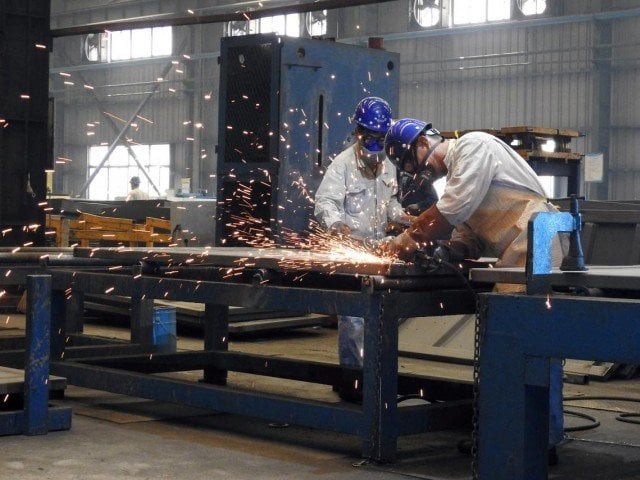Poor safety standards pose threat to workers’ health
ILO says 70% of workers work in informal sector in Pakistan, are subject to poor working conditions

ILO says 70% of workers work in informal sector in Pakistan, are subject to poor working conditions.
PHOTO: FILE
Diseases, injuries and deaths, due to occupational hazards, take some two million lives and cost the global economy about $1.25 trillion annually, according to the International Labour Organisation (ILO).
In Pakistan, as well as other countries like Bangladesh, Mali and Nepal, 70% of workers worked in the informal sector and were subject to poor working conditions, stated an ILO report titled “Safety in numbers: pointers for a global safety culture at work”.
Workers’ rights: Women seek labour laws enforcement
“Fire eruption in factories of Sindh and Punjab, deaths of labourers due to collapse of tunnels in Balochistan, unreported deaths at the Gadani shipbreaking yard, along with other incidents related to occupational safety occur at least once in a month,” said economist Kaiser Bengali.
“We don’t have any occupational health and safety system at all; the Baldia factory inferno is an example,” he pointed out.
It is not just the informal sector where accidents occur regularly, but sometimes human lives are also lost and workers’ health is affected badly in the formal industrial sector despite having proper structures.
“Melting metal surged from a furnace in a Landhi factory and affected workers and the machinery nearby,” stated the Sindh government in a statement issued in mid-November after a major accident at the factory where six people were burnt to death.
Dock workers set up street-school outside KPC
The company conducted some experiment but it could not take precautionary measures, said one of the injured.
Developing countries suffer huge losses due to work-generated illnesses, accidents and deaths, which account for up to 10% of gross domestic product, according to the ILO report.
Poor health and safety impacts, higher absenteeism, low morale and loss of skilled, experienced employees in which companies have invested create hurdles in the way of recruiting high-quality employees by the companies. Companies had to bear compensation payment, material damage to equipment, fines and disputes with trade unions, public authorities or local residents, it said.
Most of all, the companies lost their goodwill with their clients. In some high-profile cases, companies may face complete or partial loss of licence to operate, the ILO said.
“It is not just factories but also most of the big residential, office and commercial buildings in Pakistan have no arrangements to fight fire and no emergency exits, neglecting the safety of people,” remarked Bengali.
Supermarkets in Karachi are a perfect example of negligence, where thousands of people come to shop but they have no emergency exits in case of any blaze.
A year ago, fire broke out at a renowned restaurant at Do Darya, Sea View, Karachi, which showed the lack of safety measures in such places, he pointed out.
“Poor occupational health and safety also hurts efficiency of workers but businessmen think for the short run,” Bengali said. “The Baldia factory inferno is an example of extreme lack of occupational health and safety measures.”
On the other hand, he said, the builders of Margalla Towers, which collapsed in the 2005 earthquake, escaped the law, though residents had been complaining for a year about cracks appearing in the building.
“It is not just the owners who are responsible for occupational hazards but the country also does not have any occupational health and safety culture at all; businessmen may not want to invest in protective measures but workers also do not care about the safety measures even where they are provided,” said Gulfam Nabi Memon, former joint labour director, Government of Sindh.
“We need to develop the culture, behaviour and attitude for occupational health and safety,” he emphasised, adding “you can see workers working without helmets and gloves and weld without taking care of safety measures.”
“Baldia factory incident was a big disaster, different organisations tried to get compensation for the victims but that was not the solution,” said Zulfiqar Shah, a social activist associated with the Pakistan Institute of Labour Education and Research (PILER).
The solution was to bring some big reforms in occupational health and safety, but nothing substantial happened after that incident, he said. “We are standing today exactly where we were in 2012 when that incident left many grieving.”
Published in The Express Tribune, December 25th, 2018.
Like Business on Facebook, follow @TribuneBiz on Twitter to stay informed and join in the conversation.



















COMMENTS
Comments are moderated and generally will be posted if they are on-topic and not abusive.
For more information, please see our Comments FAQ